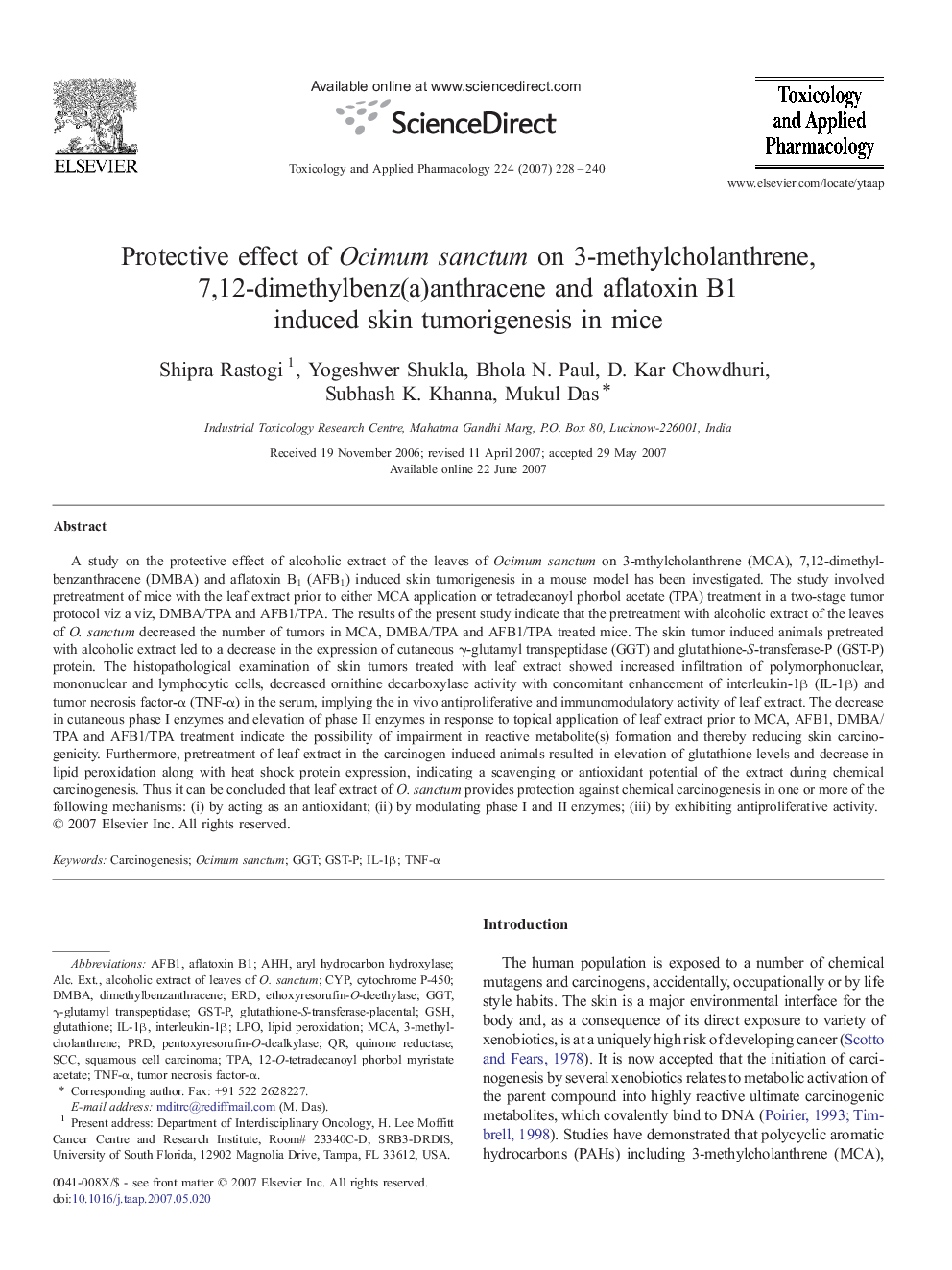| کد مقاله | کد نشریه | سال انتشار | مقاله انگلیسی | نسخه تمام متن |
|---|---|---|---|---|
| 2571665 | 1128645 | 2007 | 13 صفحه PDF | دانلود رایگان |

A study on the protective effect of alcoholic extract of the leaves of Ocimum sanctum on 3-mthylcholanthrene (MCA), 7,12-dimethylbenzanthracene (DMBA) and aflatoxin B1 (AFB1) induced skin tumorigenesis in a mouse model has been investigated. The study involved pretreatment of mice with the leaf extract prior to either MCA application or tetradecanoyl phorbol acetate (TPA) treatment in a two-stage tumor protocol viz a viz, DMBA/TPA and AFB1/TPA. The results of the present study indicate that the pretreatment with alcoholic extract of the leaves of O. sanctum decreased the number of tumors in MCA, DMBA/TPA and AFB1/TPA treated mice. The skin tumor induced animals pretreated with alcoholic extract led to a decrease in the expression of cutaneous γ-glutamyl transpeptidase (GGT) and glutathione-S-transferase-P (GST-P) protein. The histopathological examination of skin tumors treated with leaf extract showed increased infiltration of polymorphonuclear, mononuclear and lymphocytic cells, decreased ornithine decarboxylase activity with concomitant enhancement of interleukin-1β (IL-1β) and tumor necrosis factor-α (TNF-α) in the serum, implying the in vivo antiproliferative and immunomodulatory activity of leaf extract. The decrease in cutaneous phase I enzymes and elevation of phase II enzymes in response to topical application of leaf extract prior to MCA, AFB1, DMBA/TPA and AFB1/TPA treatment indicate the possibility of impairment in reactive metabolite(s) formation and thereby reducing skin carcinogenicity. Furthermore, pretreatment of leaf extract in the carcinogen induced animals resulted in elevation of glutathione levels and decrease in lipid peroxidation along with heat shock protein expression, indicating a scavenging or antioxidant potential of the extract during chemical carcinogenesis. Thus it can be concluded that leaf extract of O. sanctum provides protection against chemical carcinogenesis in one or more of the following mechanisms: (i) by acting as an antioxidant; (ii) by modulating phase I and II enzymes; (iii) by exhibiting antiproliferative activity.
Journal: Toxicology and Applied Pharmacology - Volume 224, Issue 3, 1 November 2007, Pages 228–240